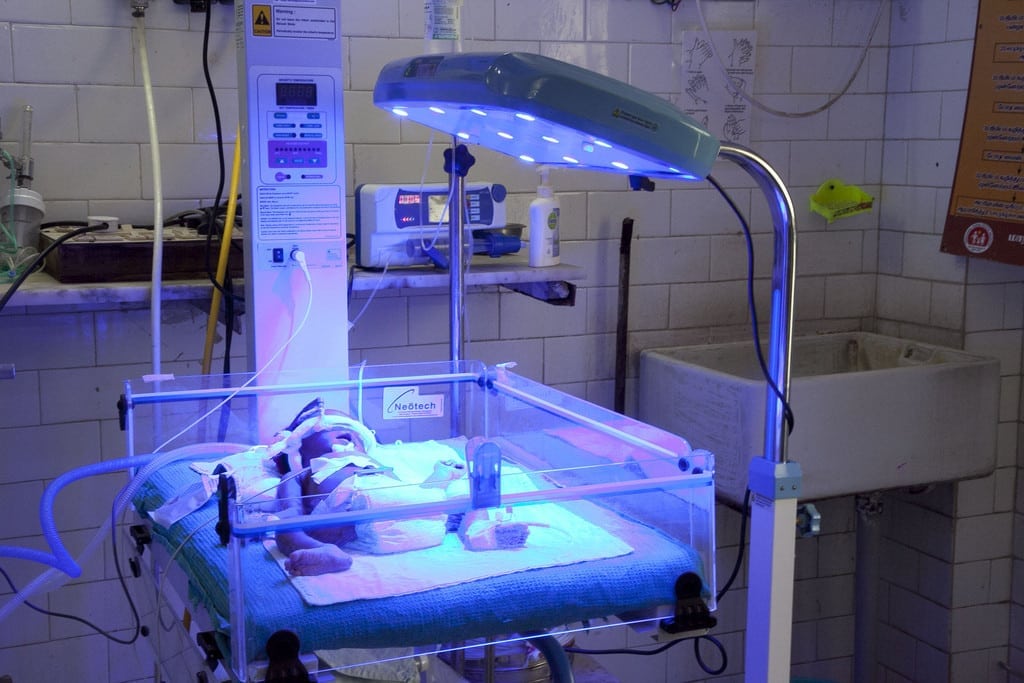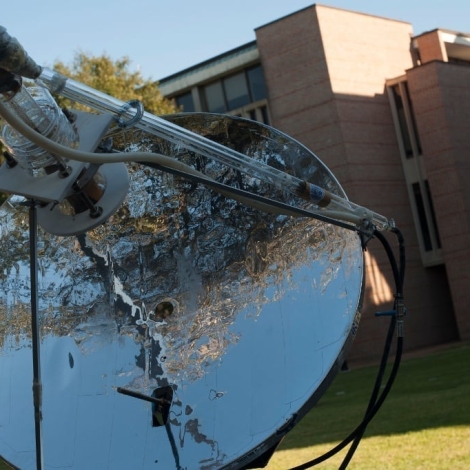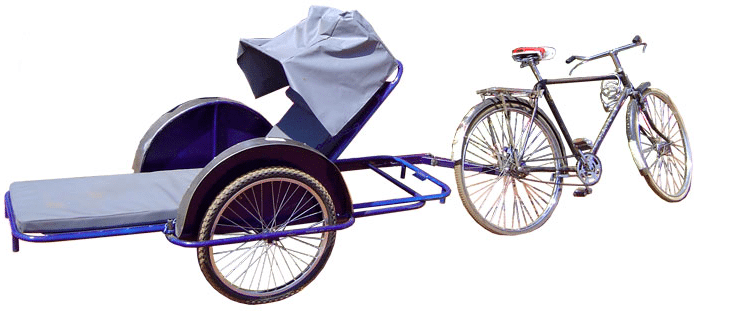Engineering research labs are churning out a solid line up of low-cost medical devices for health care in developing countries. The technology vacillates from high to low, like this HIV diagnostic device and this blood sample centrifuge built around parts stripped from an electric drill. This innovation surge fills a need for public health solutions, and just how big that need might be is under scrutiny now.
To make sense of the changing field, we asked Rebecca Richards-Kortum, the Stanley C. Moore Professor of Bioengineering at Rice University, to curate our list of 10 life-saving technologies for rural health care. Richards-Kortum founded and directs the Rice 360° Institute for Global Health Technologies. More than 300 students in the Rice 360° program have designed 40 new public health solutions and educational programs. The devices are in place in 14 countries, benefiting nearly 20,000 people.
These are Rebecca Richards-Kortum’s top 10 picks for life-saving technologies for rural health care.
Neonatal Jaundice Treatment

In 2015, Design Revolution (D-Rev) released Brilliance Pro, a low-cost, power-sipping phototherapy device to treat jaundice in newborns.
Three US design firms have developed inexpensive, energy-efficient phototherapy machines to treat jaundice in rural and low-resource communities. Design Revolution (D-rev) in San Francisco, California, released Brilliance Pro in 2015, and Design that Matters in Salem, Massachusetts, is selling its Firefly machines in 18 countries, and Little Sparrows, in Boston, Massachusetts, is developing Bili Hut, a rigid tent-like device for areas without reliable electricity. The devices use LED bulbs to cut costs and power requirements.
Little Sparrows (Autodesk Entrepreneur Impact Program customer) has developed a jaundice device specifically designed for areas without reliable electricity. Little Sparrow is conducting two pilots in Africa now, with more to come.
Jaundice afflicts at least 13 million babies every year, 9 million of whom are in developing countries. That number could be much higher: The disease often goes undiagnosed, since the front lines of health care in impoverished communities are often home remedies and sparsely equipped clinics.
D-Rev and DtM are supported by our friends at the Autodesk Foundation, and Little Sparrows is an Autodesk Entrepreneur Impact Customer. Please see our past coverage of D-Rev’s Brilliance.
Point of Care Diagnostics

DFA developed paper-based tests like this one to diagnose disease in people and livestock, and contaminants in food. Photo courtesy of Patrick Beattie / DFA
Hemospec (Rice University/BTB): Point-of-care diagnostics increase diagnostic capabilities in rural settings by reducing the need for follow-up clinic visits and reducing the cost per test. For example, Hemospec is a portable device that provides instant results for anemia diagnosis.
Similar technology
Diagnostics for All: Paper-based tests, liver function test (AIDS, TB), no reader required
PATH: Strip test for gestational diabetes
Nucleic acid isothermal amplification paper test strips: TB diagnosis, China (pg. 33) RRK lab (TB, HIV)
Post-Partum Hemorrhage Care

Researchers at Monash University aim to replace injections of oxytocin with inhalable oxytocin to prevent hemorrhage after delivery of an infant. Photo by Monash University / Flickr
Inhaled oxytocin (Monash University): Researchers at Monash University are developing an inhaled form of the drug oxytocin, which can effectively prevent postpartum hemorrhage. The inhaled form aims to increase access to the drug because it does not require refrigeration or trained medical personnel for administration.
Similar technology
SAPHE pad (Rice University) Blood Loss Measurement
Maternal Transport / Prenatal Care

A Cambodian taxi driver waits for a fare. Photo by WWF United Kingdom / Flickr
Community taxi service (Partners for Development, Cambodia): In rural settings, it can be prohibitively costly, time-consuming, and unsafe for mothers to travel to a health center for ante/post-natal care or delivery. One of the easily overlooked public health solutions is a self-sustainable and targeted transport service. The initiative by Partners for Development, for example, provides a reliable means of transportation for mothers, along with providing other transportation for remote communities, such as school busing.
Clean Cook Stoves

Photo by BURN Design Lab
Burn Manufacturing: Traditional biomass cookstoves cause over 4 million deaths per year from respiratory and cardiovascular diseases, cancers, and premature births. Clean cook stoves, such as those from Burn Manufacturing, have tremendous potential to reduce these preventable deaths, as well as reduce greenhouse gas emissions.
Water Purification

Photo by Stephen Begin / Flickr
UV LEDs: 780 million people lack access to clean water. Simple and effective purification technologies help provide purification methods at the point-of-use. UV-LED technology is developing to be able to provide a low-cost, low-power, and effective means for water purification.
Similar technology
SODIS – solar water disinfection
Solar Steam (Naomi Halas)
Improved Sanitation

This device built around a dish reflector efficiently heats liquids with sunlight. Applications include water and sanitation treatment. Photo by Jeff Fitlow / Rice University
Solar Steam (Naomi Halas): Unsanitary conditions contribute to the spread of communicable diseases throughout the developing world. Solar Steam is a new, highly efficient technology that converts water into steam for the sterilization of human waste. This technology also has the potential to be used for medical device sterilization and water purification.
Mobile/Electronic Health Care

Photo credit: Kiwanja/Flickr
mDiabetes (Arogya World): Cell phones are ubiquitous even in the most rural settings, thus opening up many doors to public health soluitons and telemedicine in the developing world. One such initiative is mDiabetes, a diabetes awareness and prevention text message program in India (four of every five people with diabetes live in the developing world).
Similar technology
Project Masiluleke
MAMA: Mobille Alliance for Maternal Action
Medic Mobile
HIV Prevention

Prepex male circumcision device
Prepex Circumcision Device: Male circumcision reduces the risk of HIV transmission in men by 60 percent. Prepex is an adult male circumcision device that does not require anesthesia, sutures, or a sterile setting; it was recently endorsed by the WHO as one of the world’s viable public health solutions.
Similar technology
Shangring device
PMTCT – Pratt pouch
Neonatal Sepsis Prevention

SafeSnip umbilical cutting device. Photo courtesy of SafeSnip
SafeSnip: Infections account for a significant portion of the 3 million-plus neonatal deaths that occur each year. SafeSnip is a simple technology that facilitates clean umbilical cord cutting and tying, which is a step birthing process that typically carries high risk for infection.
Similar technology
Janma clean birth kit
Bonus categories
Rebecca Richards-Kortum broke our arbitrary rule to limit this list to 10 and included four more categories.
Simulation-Based Training Operative Experience
Emergency C-sections (funded by SLAB)
Vaccine Management
Solar Fridges: NASA, SureChill
Auto-disposable injection system: Uniject
Vaccine Vial Monitor
Neonatal Respiratory Distress Treatment
CPAP: Pumani (Rice University BTB)
High Oscillation CPAP: SEA-PAP, Seattle Children’s Hospital
Fortifying foods to improve nutrition
Iron-enriched millet seed: Billions suffer from malnutrition due to a lack of vitamins and minerals. Approximately half of all pregnant women and children suffer from iron deficiency in developing countries, a problem begging for public health solutions. One comes from HarvestPlus, which distributes an iron-enriched millet seed in India that provides 30 percent of a woman’s daily iron.
Similar technology
HarvestPlus: Vitamin A/Zinc
PlumpyNut
Sprinkles
Moringa Tree

